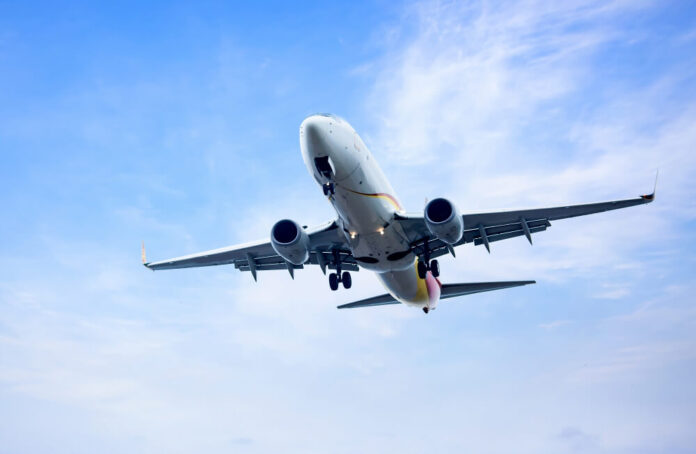Over the years, Spirit Airlines has been a significant player in the U.S. airline industry, known for its budget-friendly fares and no-frills service. However, recent rumors have sparked concern among travelers and investors alike: Is Spirit going out of business? While these rumors have created a buzz, it’s important to analyze the facts behind these speculations. In this article, we will explore Spirit Airlines’ current situation, the challenges it’s facing, and what the future may hold for the airline.
By the end, you will have a clear understanding of whether Spirit Airlines is on the brink of collapse or if it has a viable future ahead.
Spirit Overview
Founded in 1980, Spirit Airlines started as a charter airline before transitioning into a low-cost carrier in 1992. The airline has since built a reputation for offering affordable flights by adopting an ultra-low-cost model. Spirit focuses on providing basic air travel services and allows customers to pay for additional perks such as baggage, seat selection, and refreshments.
Known for its “Bare Fare” pricing structure, Spirit’s model appeals to budget-conscious travelers who are willing to forgo luxury in exchange for cheaper tickets. The airline operates primarily in the U.S. but also serves destinations in Latin America and the Caribbean. Despite its popularity among thrifty flyers, Spirit Airlines has faced a mixed reputation, with some passengers criticizing its fees and service quality.
In recent years, Spirit Airlines has seen significant growth, making it one of the largest ultra-low-cost carriers in the country. However, like many others in the airline industry, Spirit has faced increasing pressures from both internal and external factors that could impact its future operations.
Is Spirit Going Out of Business?
Rumors surrounding the potential closure of Spirit Airlines have been circulating, but these claims are mostly speculative. So, is Spirit really going out of business?
The answer is no, Spirit is not currently going out of business. While the airline has faced challenges, it remains one of the major players in the U.S. airline industry, with a fleet of over 150 aircraft. Spirit is still operational, flying millions of passengers annually, and is continuing to expand its services.
However, Spirit’s struggles in the market have raised concerns. The airline’s business model, heavily reliant on low fares and additional charges, leaves it vulnerable to fluctuations in fuel prices, competition, and other external factors that may affect its profitability. The reality is that while Spirit is not going out of business, it may need to adapt its strategy to maintain its position in a competitive and volatile industry.
Challenges Faced by Spirit Airlines
Like all airlines, Spirit Airlines faces numerous challenges, both internally and externally, that threaten its profitability and long-term success.
Competition in the Low-Cost Airline Market
Spirit competes with other low-cost carriers like Southwest Airlines, JetBlue, and Ryanair, all of which offer similar pricing models. Southwest, for example, offers free checked bags, which is a perk that many Spirit passengers may find attractive. The rise of budget-friendly travel options and the increasing competition in the airline industry have made it more challenging for Spirit to maintain its dominance.
Rising Fuel Costs
One of the biggest operational costs for airlines is fuel, and Spirit Airlines is no exception. As fuel prices increase, Spirit faces mounting pressure to either raise fares or absorb the additional costs, both of which could hurt its competitive edge. This has been particularly challenging for Spirit, given that its low-cost model depends heavily on keeping ticket prices low.
Customer Service Criticism
Another challenge Spirit faces is its customer service reputation. While many passengers appreciate its low fares, Spirit often receives complaints about poor customer service, uncomfortable seating, and unexpected fees. These issues have contributed to a less-than-stellar brand image, which may deter potential customers from booking with the airline.
Operational Disruptions
Spirit has faced significant operational disruptions in the past, especially during peak travel periods. Flight cancellations, delays, and a lack of customer service support during such disruptions have often led to frustration among passengers. These disruptions can harm the airline’s reputation, leading to lost business and legal challenges.
What’s Behind the Decline in Spirit’s Stock Value?
In recent months, Spirit Airlines’ stock value has seen a decline, leading to growing concerns among investors. The drop in stock price is the result of a combination of factors, including external market conditions and internal struggles.
Economic Uncertainty
The airline industry is sensitive to economic conditions, and when there is economic uncertainty, discretionary spending on travel often declines. In periods of recession or economic slowdowns, people are less likely to spend money on vacations and non-essential travel. Spirit Airlines, with its dependence on volume-based pricing, is vulnerable to such fluctuations.
Investor Concerns
Spirit’s stock has also been impacted by investor concerns regarding its long-term viability. With rising competition, challenges related to operational efficiency, and mounting criticism over its business practices, investors are questioning whether Spirit’s business model can remain sustainable in the long term.
Fuel Price Volatility
As mentioned earlier, rising fuel prices are a major factor in the decline of Spirit’s stock value. As fuel costs increase, airlines have to either absorb the costs, raise ticket prices, or both. Spirit’s low-fare business model, which thrives on keeping prices down, makes it more challenging for the airline to balance profitability while maintaining its competitive pricing.
How Has the Pandemic Affected Spirit Airlines?
The COVID-19 pandemic had a significant impact on the airline industry, and Spirit Airlines was no exception. In the early months of the pandemic, air travel ground to a halt, and Spirit, like many other airlines, had to cut flights, lay off workers, and drastically reduce its operations. Despite the challenges, Spirit was one of the first airlines to resume operations as demand for travel started to rebound.
Recovery and Adjustments
Spirit Airlines has since worked to recover from the impacts of the pandemic. It implemented new health and safety measures to reassure passengers, adjusted its flight routes to meet changing demand, and launched promotions to attract customers back to flying. However, the full recovery for Spirit, like many others, will take time, as international travel restrictions and the lingering effects of COVID-19 continue to impact demand.
Rising Operational Costs
On top of the pandemic’s operational disruption, Spirit faces rising operational costs as it adapts to new travel norms. With a reduced workforce and rising demand, maintaining operations at pre-pandemic levels has become increasingly expensive. As Spirit tries to balance cost-cutting measures with high customer expectations, it faces significant financial pressure.
The Future of Spirit Airlines: What Lies Ahead?
Despite the challenges, Spirit Airlines is not out of the game just yet. The airline has made several moves to improve its long-term outlook, and there are signs that it could bounce back.
Expansion Plans
Spirit Airlines has plans for expansion, with new routes being introduced in both domestic and international markets. These efforts could help Spirit diversify its revenue streams and attract new customers, particularly as travelers begin to return to the skies in greater numbers.
Partnerships and Acquisitions
While rumors have floated around that Spirit might be acquired by a larger airline, there’s no concrete evidence suggesting that it’s in talks with any major players. However, partnerships with other companies or even acquisitions could play a role in securing Spirit’s place in the industry. A merger could help Spirit reduce costs, expand its offerings, and improve its overall operational efficiency.
Rebuilding Customer Trust
Spirit must focus on rebuilding customer trust, especially with regard to its service standards. Improving its customer support, making flight changes easier, and enhancing the in-flight experience will be key to attracting loyal customers. If Spirit can improve its reputation while maintaining its low-fare structure, it could continue to be a top choice for budget-conscious travelers.
Conclusion
So, is Spirit Airlines going out of business? While the airline faces significant challenges, it is far from the end of the road. With its budget-friendly pricing, large fleet, and expansion plans, Spirit Airlines still has the potential to succeed in a competitive market. However, it must address its operational inefficiencies, improve customer satisfaction, and navigate the complex landscape of rising fuel costs and economic uncertainty.
For now, Spirit Airlines is not going out of business, but its future depends on how well it adapts to the ongoing challenges in the industry. If you’re considering flying with Spirit, it’s important to weigh the airline’s pros and cons, and stay informed on any changes that may affect your travel experience.


